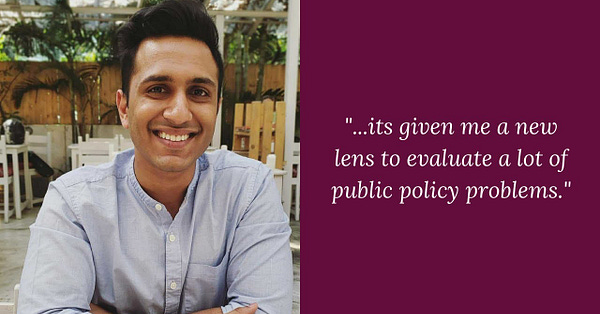Urban Warfare - How to Win Cities, Warden's Five Rings, Cooperation between Man and Drones
Issue 13, 27 Dec 2021
Dear Readers,
This is my last issue for 2021. I have received a lot of support and constructive feedback since I started writing this newsletter. I am incorporating all the valuable feedback received till now. I am taking a break for the holidays and I will be back with an updated version on 7th Jan 2022.
Happy New Year!
____________________
I. Looking Back
I recently wrote an article about China's position paper on regulating the military applications of artificial intelligence (AI) for Asia Times. You can read it here. I had covered the Proposal in last week's issue of China Tech Dispatch.


Also, jumping the bandwagon of year-end rewinds, here are a few issues of China Tech Dispatch I think all China watchers should read (in no particular order).
Science Fiction Vision, Innovative Application of Existing Tech, Robot with AI Brain
Cognitive Warfare, Winning Future Wars, and Disruptive Technologies to "Dazzle" Opponents
Narrative Warfare, Drones for Maritime Operations, Military Theory in Information Age
II. Military and Warfare
Urban Warfare: How to Win Cities
An article by Su Guanfeng (affiliation unknown) on modern urban warfare is on how to win cities. It involves both military and political operations. Since the urban combats are fought under a spotlight, the author urges on necessity to focus on effectiveness, targeting the enemy's will to resist, shake the enemy's political foundations, focus on moral aspects and legality of operations, reduce collateral damage, and focus on accuracy of intelligence and information support.
Important considerations for the urban warfare:
The information-led war: Without timely and accurate information, the urban landscape can become a maze. Hence acquiring information superiority becomes an important factor in urban warfare. Information superiority can weaken the geographical advantage of the enemy. Sufficient information on the structure of the target city, its defensive forces, and political, economic, and social conditions can help in formulating a useful strategy. UAV reconnaissance and other reconnaissance methods providing real-time updates will be useful in providing accurate intelligent information support.
Focus on precision: To avoid accidental injuries and indiscriminate bombing of cities, careful selection, and analysis of targets are important. A detailed analysis of the enemy’s city defense system should be carried out to accurately determine the strike target and expected effects. The firearms for strike and suitable ammunition should be accurately selected based on the nature and defense strength of the target.
Seamless man-machine coordination: Cities are special battlefields. Hence use of traditional weapons and tactics has limitations. However, the urban battlefield provides a broad stage for the use of intelligent, unmanned weapons, and equipment. Intelligent weapons and equipment have outstanding characteristics such as lightness, exquisiteness, and agility, which can make up for the shortcomings of personnel in urban operations. However, the intelligent weapons have limitations and can mix civilian and military targets, can be manipulated by the enemy. Hence, intelligent weapons need a "human touch" to avoid misidentification of targets, cover dead spots, and lead decision-making where machines cannot. This way, traditional human warfare, and modern intelligent warfare methods can complement each other.
Small independent battles: Urban combat weapons are not suitable for large scale operations. Hence the author argues modern urban combat should be broken into "small battles." Before the battle, targets in the city can be grill-calibrated and divided among a small control group with independent decision-making power. Through the "small victories" of each group's independent operations, a "complete victory" in urban combat should be achieved.
Psychological operations - attack on enemy's mind: Attacking enemy's morale is important in urban combats. This falls under the strategy of winning wars without fighting or reducing the intensity and length of combat. The psychological operations include publicizing the rationale behind attack on the city, publicizing the consequences of resistance, and encouraging the enemy to give up resistance. Attacking the military and political leaders can strike a blow to the enemy's morale and induce panic. On the other hand, it is also important to strictly abide by the rules of engagement, follow discipline on battlefield, reduce incidental casualties, treat the injured civilians, rescue the trapped people, and strive for support as much as possible.
This article builds upon another article on urban warfare published in September this year. It was written by Zhang Wei and it argued the importance of urban warfare in future combats. In the article, Zhang Wei gave key arguments and highlighted importance of urban warfare were. First, it is impossible that future warfare will not involve cities. Author argued that in era of "informationized warfare", although the battlefield space has expanded to land, sea, air, space, and cyber battlefields, it is impossible for any single-dimensional battlefield space to exist independently, especially for wars that are not fought on the land based battlefield. Second, most combat targets are in cities. Modern cities are centre of administrative, economic, trade, and cultural activities. Hence they become a high value target. Here, the author uses example of Warden's Five Ring System Theory to identify targets. Third, the modern warfare is directed at cities. The author argues that development in modern warfare have overcome the drawbacks of traditional combat strategies, like siege, to capture cities. New combat methods have emerged. For example, "precision strike", "targeted removal", and "decapitation operations". Emergence of intelligent unmanned combat equipment, the implementation of air strikes and counter air strikes, seizure and counter seizure, etc. have made urban warfare easier, quick, and less risky. Fourth, cities have been historically important for warfare. From primitive times to modern era, capturing cities has been an important indicator of victory in wars.
Warden's Five Rings: It is a military strategic theory developed by the former US air force officer Col. John A. Warden III. It is essentially a guide for wartime target selection. This theory organises enemy into five concentric rings in descending order of importance from innermost to outermost ring. The five rings in this theory represent targets in order of their importance. The innermost ring has to be highest priority. They are arranged in a manner that attack on each ring cripples the enemy's ability to wage a war. The innermost leadership ring represents people who control the system or state. System essentials ring represents key production that is critical for state survival, i.e., oil, electricity, food and money. The population ring represents state‘s civilian population. Finally, outermost ring of fielded forces represents state's defence system.
Figure: Warden's Five Rings
Man and Drones Working Together
This article by Zhao Xiangang, Li Rui, and Liu Hao (affiliation unknown) advocates enhancing the interoperability between manned aircraft and unmanned aerial vehicles (UAV) to achieve more direct battlefield information interaction, combat support, and coordination. Author suggests three forms of cooperation between man and UAVs. First, cooperation between manned aircraft and UAV where actions of UAV are controlled by a control station. Manned aircraft gets data from UAVs for its operations. Manned aircraft and UAVs will have an open communication link for coordination. This is the most basic form of cooperation model. Second model includes, control station to guide flight path of UAV while the manned aircraft controls sensors and weapons system on UAV. Third model is where the manned aircraft takes full control of the UAV and can fully control actions of UAV. In this model, the manned aircraft and UAVs are integrated together to perform information processing, mission planning, and decision-making, command distribution. Together they form an active control mechanism for combat missions and battlefield situations capable of performing highly confrontational combat missions in a variety of complex battlefield environments.
Additional Reading
China’s future spaceplane may be able to take off and land at airports
Chinese scientists hail success of new hypersonic engine that military ‘did not think would work’
Megha Pardhi is a Research Analyst at The Takshashila Institution. She tweets at @pardhimegha21.
Before you go
If solving India’s grand public policy challenges interests you, get equipped by signing up for Takshashila’s 12-week Graduate Certificate Programmes.
Hear more about the GCPP Program from our alumni.


Find all the details you need to know here: https://school.takshashila.org.in/gcpp
For any queries, you can contact: gcpdmin@takshashila.org.in / contact@takshashila.org.in




